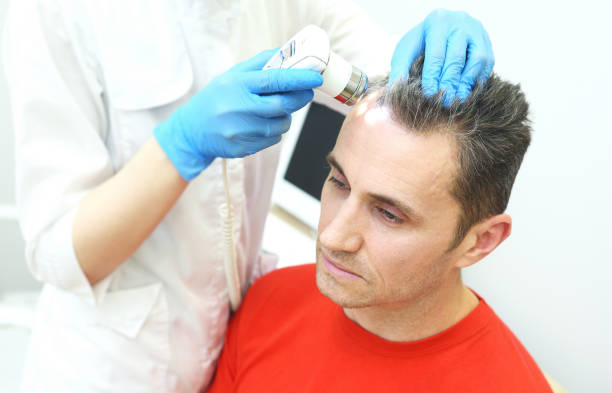Understanding Hair Loss: Medical Options and Solutions
Alopecia treatment options aim to help manage hair loss and support scalp health. Understanding the different approaches, from medical treatments to lifestyle adjustments, allows individuals to make informed choices that align with their needs and overall well-being.

What Are the Main Alopecia Areata Treatment Methods?
Several treatment approaches exist for managing alopecia areata, ranging from topical medications to systemic therapies. Corticosteroids represent the most commonly prescribed first-line treatment, available as topical creams, intralesional injections, or oral medications. Topical corticosteroids like clobetasol propionate are often recommended for mild cases, while intralesional steroid injections may be more effective for localized patches.
Other treatment options include topical immunotherapy using contact sensitizers like diphenylcyclopropenone (DPCP) or squaric acid dibutylester (SADBE). These treatments work by creating a controlled allergic reaction that may redirect the immune system away from attacking hair follicles. Minoxidil, commonly known for treating male pattern baldness, may also help stimulate hair regrowth in some cases of alopecia areata.
How Effective Are Hair Regrowth Solutions for Alopecia?
The effectiveness of hair regrowth solutions varies significantly depending on the extent of hair loss, individual response to treatment, and the specific approach used. Studies indicate that topical corticosteroids show positive results in approximately 45-60% of patients with limited patches of hair loss. Intralesional steroid injections tend to be more effective, with success rates ranging from 60-67% for localized alopecia areata.
Topical immunotherapy has shown promising results for more extensive cases, with some studies reporting hair regrowth in 40-60% of patients with severe alopecia areata. However, response rates tend to be lower for individuals with alopecia totalis or alopecia universalis, where hair loss affects the entire scalp or body.
Newer treatments like JAK inhibitors (Janus kinase inhibitors) have shown encouraging results in clinical trials. Oral medications such as tofacitinib and ruxolitinib have demonstrated significant hair regrowth in some patients with severe forms of alopecia areata, though long-term safety data is still being evaluated.
When Should You Seek an Alopecia Specialist Consultation?
Consulting with a dermatologist or alopecia specialist becomes important when hair loss progresses rapidly, affects large areas, or causes significant emotional distress. Early intervention often leads to better treatment outcomes, particularly for localized patches of hair loss. Specialists can provide accurate diagnosis through clinical examination and sometimes dermoscopy or biopsy if needed.
A specialist consultation is particularly valuable when over-the-counter treatments have proven ineffective, when hair loss spreads to multiple areas, or when individuals experience complete loss of scalp hair. Specialists can also help distinguish alopecia areata from other forms of hair loss, such as androgenetic alopecia or telogen effluvium, ensuring appropriate treatment selection.
Additionally, specialists can provide guidance on newer treatment options, clinical trial opportunities, and psychological support resources. They can also monitor treatment progress and adjust therapeutic approaches based on individual response patterns.
| Treatment Type | Provider/Medication | Estimated Cost Range |
|---|---|---|
| Topical Corticosteroids | Generic clobetasol cream | $15-50 per month |
| Intralesional Injections | Dermatology clinics | $200-500 per session |
| Topical Immunotherapy | Specialized dermatology centers | $300-800 per treatment cycle |
| JAK Inhibitors | Prescription (tofacitinib) | $3,000-5,000 per month |
| Minoxidil Solution | Over-the-counter brands | $20-40 per month |
Prices, rates, or cost estimates mentioned in this article are based on the latest available information but may change over time. Independent research is advised before making financial decisions.
What Factors Influence Treatment Success?
Several factors affect the likelihood of successful hair regrowth in alopecia areata. Age at onset plays a significant role, with younger patients often showing better response rates to treatment. The extent and pattern of hair loss also influence outcomes, with localized patches typically responding better than widespread hair loss.
The presence of nail changes, such as pitting or ridging, may indicate a more severe form of the condition that could be less responsive to standard treatments. Family history of alopecia areata or other autoimmune conditions may also impact treatment effectiveness and disease progression.
Timing of treatment initiation is crucial, as early intervention often yields better results. Patients who begin treatment within the first few months of hair loss onset typically experience higher rates of regrowth compared to those who delay treatment for extended periods.
Alopecia areata remains a complex condition with varying treatment responses among individuals. While complete cure is not always achievable, many treatment options can help promote hair regrowth and improve quality of life. Working closely with healthcare professionals familiar with this condition provides the best opportunity for successful management and optimal outcomes. Understanding available options empowers patients to make informed decisions about their treatment journey while maintaining realistic expectations about potential results.
This article is for informational purposes only and should not be considered medical advice. Please consult a qualified healthcare professional for personalized guidance and treatment.




